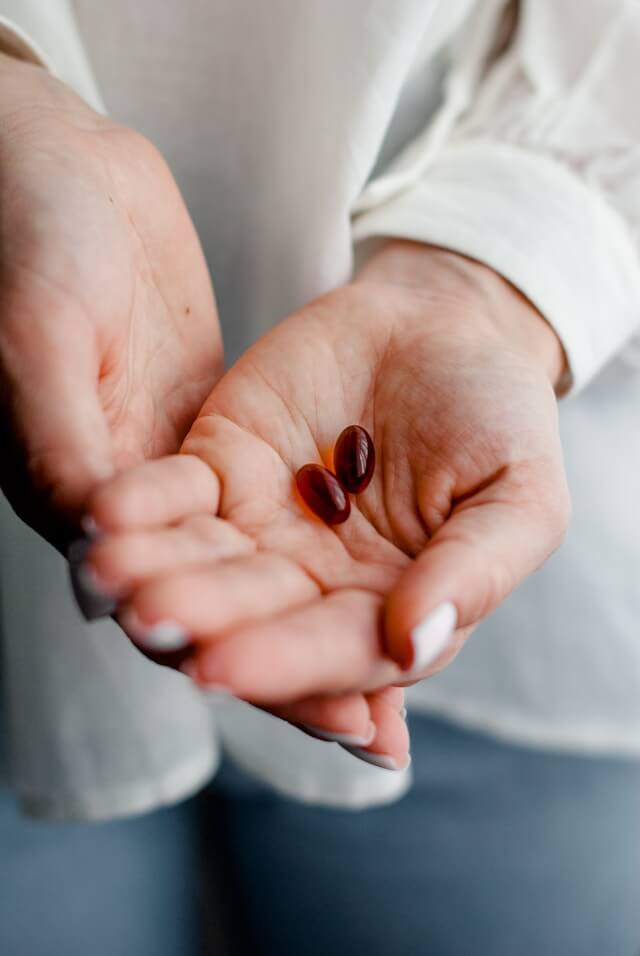If you suffer from migraines, you know their onsets aren’t always so mysterious. A bad night’s sleep, high-stress levels, and even certain foods might trigger a migraine. For that reason, it’s safe to say that migraine attacks are affected by multiple factors and are not just dependent on genetics. The environment, lifestyle, and diet can also trigger migraines.
Good nutrition seems to be the answer to most things health. According to the Global Burden of Disease, suboptimal diets are linked to more fatalities from noncommunicable illnesses than any other risk factor, such as smoking. So, as you would expect, trading an inadequate diet for an optimal one is the way to go. An effective way to decrease the burden of certain diseases is by consuming more of the good dietary components our current diets lack. Among the most under-consumed nutrition components is fiber. In fact, 95% of American adults and kids do not consume the advised amount of fiber. New research has found that increased consumption of fiber-rich meals may help protect against severe headaches or migraine.
Other dietary factors may also be involved with migraines. There are several nutritional triggers out there. Certain foods, such as chocolate, cheese, milk, or alcoholic beverages, are commonly reported triggers for migraine attacks. However, there is a severe misunderstanding revolving around the connection between food and migraines. Firstly, we eat many food ingredients at once, making it challenging to identify dietary triggers without the help of professionals. Secondly, one food component may affect your migraine one day while not the next. But generally speaking, most studies indicate that avoiding migraine-inducing foods, ingredients, and minerals while ingesting migraine-beneficial ones is advantageous. Some diets are even believed to reduce migraine through a variety of mechanisms.
In this article, we will look at the relationship between diet and migraine. We will also discuss beneficial diets and dietary components.
Relationship Between Diet & Migraine
Let’s be honest; migraines love to be disruptive. You’re just enjoying life when all of a sudden, a migraine starts creeping in. Before you know it, you’re in bed waiting for it to be over. The good news is migraines don’t have to be the ones controlling us; we can—to a certain extent—tame them. Multiple factors bring on migraine attacks, some of which we can’t control, like the weather, while others we can, like our diet.
Due to the limited efficacy of currently available drug and non-drug therapies, the prevention and management of migraines have proven difficult. Researchers have been looking for more efficient management methods, and a growing body of research indicates that migraine occurrence and relief are highly correlated with our nutrition. Among lifestyle factors, nutrition and diet play a significant role in migraine, so adjusting one’s diet may be helpful in both avoiding and treating migraines. Compared to drug treatments, dietary therapies are also less expensive and have fewer side effects. Carbohydrates, proteins, fats, minerals, and vitamins are the primary components of a diet. It is unclear, however, if some dietary variables cause headache episodes to occur, and there is still debate over the effectiveness of nutritional treatments for migraines.
Certain foods have been identified as possible triggers for migraine. Such foods may include aged cheese, smoked fish, chocolate, alcoholic beverages, yeast extract, milk, cured meats, and artificial sweeteners. These dietary products should be recognized and removed. However, not every migraine sufferer who consumes these foods will experience a migraine episode. Finding your unique dietary triggers can be challenging. Keeping a food diary alongside your headache log can help you remember what you consumed before migraine episodes.
Being provided with tailored nutritional advice based on your health and comorbidities may be helpful in lowering headache incidence or even delaying an episode. As we will discuss the various mechanisms in which food has a role in migraines and what diets are best later in the article, dietary fiber is a food component worth mentioning.
Fiber Intake & Migraine
With all the types of diets swarming the media, it’s easy to just go with the flow and follow one that can limit your intake of specific nutritional components. It’s possible that by abandoning certain foods, you’ll be depriving your body of many important nutritional components, like dietary fibers.
Dietary fibers are carbohydrates that the body cannot digest or absorb. Instead, they are fermented by the intestinal microbiota found in our large intestine. Foods high in fiber include fruits, veggies, beans, whole grains, and tubers. The American Heart Association advises eating a range of foods high in fiber. The recommended total dietary fiber intake should be between 25 to 30 grams daily.

High Fiber Diet for Migraines
The health benefits of fiber consumption are well established. For example, consuming adequate amounts of fiber helps improve intestinal health, regulate the intestinal microbiome, reduce blood glucose concentrations, lower serum cholesterol, and increase the feeling of satiety. In addition, due to their functions in the body, dietary fiber is linked to reducing chronic diseases such as type 2 diabetes.
A recent study explored the association between dietary fiber intake and migraines. It was found that increasing your consumption of foods high in fiber could protect you from migraines or severe headaches. The frequency of severe headaches or migraine dropped by 11% for every 10-gram increase of dietary fiber consumed a day. However, no such inverse relationship was observed among Mexican Americans, other ethnicities, or those with a BMI of 25 to 30 kg/m2.
However, the mechanisms by which dietary fiber acts on migraines remain unclear. A concept that has been in the spotlight in recent years is the gut-brain axis. Some experts believe that the relationship between the gut and the brain may contribute to neuro-related issues and that modulating the gut bacteria may help prevent and treat these issues. The process of the gut-brain axis’ impact on migraine has not been fully understood; however, it has been hypothesized that greater intestinal permeability may cause pro-inflammatory chemicals to enter the trigeminal vascular system and cause migraine to develop. Some evidence suggests that gradually increasing dietary fiber consumption may help migraine sufferers by regulating the gut-brain axis, gut bacteria, and short-chain fatty acids. Dietary fiber may also decrease inflammation and alleviate migraine symptoms.
Best Diets For Migraine Sufferers
Knowing that food plays a role in migraines, dietary interventions have been studied to help in managing episodes. Diet is a modifiable aspect, and so the effects of various types of diets have been researched, examining their relationship with migraines. It is said that the dietary interventions, which we will dive into later, affect migraines characteristics through various mechanisms as they may play a role in neuronal excitability, brain mitochondrial function, serotoninergic dysfunction, platelet aggregation, neuroinflammation, hypothalamic function, and the presence and amount of certain factors that have an effect on the pathogenesis of migraine (like nitric oxide, adiponectin, calcitonin gene-related peptide, and leptin). Nutritional supplements like MigreLief also work via several of these mechanisms of action, making them highly efficient in nutritionally supporting migraine sufferers. Neurologists and headache experts have been recommending MigreLief, the daily supplement for migraine patients, for over 25 years.
Migraine-specific diets have been created due to the identification of numerous dietary migraine triggers. Elimination diets, ketogenic diets, and comprehensive diets are just a few of the diets that have been suggested as being beneficial for migraine, mostly in helping to avoid them. Even though there is inconsistency in the literature, currently available data show a possible promise in dietary treatments for some migraine patients.
The idea of specific diets for migraine has been developed alongside elimination diets. According to a recent study, potentially beneficial diets for migraines include ketogenic, modified Atkins, low-fat, high omega-3/low omega-6, and high-folate. However, keep in mind that numerous factors impact the efficiency of the diet one chooses, such as sex, age, and heredity. Concomitant conditions or even particular migraine types must be considered in the reasoning. To get the best results, a combination of proven-effective diets or nutritional therapies may be useful. It’s recommended to always consult your doctor or a health care professional regarding your case.
Here are some of the most recommended diets for migraines:
Ketogenic Diet
We’ve all heard of the ketogenic, or keto, diet. It’s everywhere, from the labels on our food packages to the posts we see on social media. It has been widely adopted for weight loss over the past few years, with about 5% of individuals adhering to it in 2021. However, the keto diet is not new at all. The ketogenic diet was first used as an epileptic therapy in the 1920s to imitate the metabolism of fasting. In more recent years, this diet has had growing attention for its potential benefits in other neurological disorders.
A ketogenic diet is primarily a low carbohydrate, high fat, and moderate protein diet. Macronutrients are divided into 55%-60% fat, 30%-35% protein, and 5%-10% carbohydrates. The ketogenic diet’s goal is to allow our bodies to use a different kind of fuel source. Generally, carbohydrates supply the body with most of the fuel it needs. However, with the keto diet, carbohydrate consumption is restricted, so our body starts burning fat for fuel instead. In other words, instead of relying on glucose (sugar) that is obtained from carbs for fuel, the body starts depending on ketone bodies, a form of fuel that the liver creates from stored fat. These ketone bodies are widely responsible for why the keto diet can benefit migraine sufferers.
Ketogenic diets cause an increase of ketones in our bodies, which have been found to help prevent migraine. Ketone bodies affect oxidative stress, mitochondrial activity, inflammation, brain excitability, and the gut microbiota. A 2013 study examined the difference between ketogenic and low-calorie (1200-1500 kcal/day) diets in 108 migraineurs. The ketogenic diet outperformed the low-calorie diet with a 90% responder rate, whereas the low-calorie diet was not beneficial. In another study involving 96 migraine sufferers, migraine remission following ketosis was also found. A substantial improvement in headache-related characteristics, such as the frequency of episodes, was seen.

Keto diet for migraines
Modified Atkins Diet
Like the keto diet, the modified Atkins diet has also been commonly used in treating intractable epilepsy. However, this diet is a more relaxed version of the ketogenic diet. The modified Atkins diet is initiated without an induced fasting state or restriction of protein, fat, calories, or fluids and so can be applied on out-patients more easily.
Similarly to anticonvulsant drugs and the ketogenic diet, the modified Atkins diet’s positive effects on migraine, neurodegenerative diseases, brain tumors, autism, and amyotrophic lateral sclerosis have been studied for their use as a therapeutic strategy. In addition, both the keto and modified Atkins diets are believed to play a part in neuroprotection, mitochondrial function, and ATP generation improvement.
Low-Fat Diet
A low-fat diet is on the other end of the spectrum from the keto and the modified Atkins diet. However, it still made its way onto the list of diets good for migraines! This shows that individual factors play a major role, and no one diet fits all. A couple of studies have examined the effects of low-fat diets on migraines.
A 1999 research trial involving 54 migraine patients examined the role of a low-fat diet on migraine. After 12 weeks of restricting their fat intake to less than 20 grams per day, a reduction in migraine frequency, intensity, and the need for medication was observed in the patients. Another study found that the intervention group that was allocated a low-fat vegan diet, followed by an elimination diet and a reintroduction diet, had a drop in migraine frequency, intensity, and use of medication compared to the placebo group. Another cross-over study also found similar results, as a low-fat diet showed to have significantly reduced the frequency and intensity of headaches.

High Omega-3 + Low Omega-6 Diet
The amount and type of fat consumed have an impact on inflammatory reactions. The proper balance between omega 6 and omega 3 fatty acids helps to reduce inflammatory reactions, improve platelet function, and regulate vascular tone. Through our western diets, we often consume too much omega 6 while consuming too little omega 3 fatty acids. A ratio of omega-6 to omega-3 that is too high is linked to elevated inflammation in the body, raising the risk of certain diseases. A diet that reduces omega-6 fatty acid consumption while increasing omega-3 fatty acid may be greatly beneficial, specifically for migraineurs.
To unveil how different types of fat had differing headache-related influences, a randomized study was conducted, evaluating the impact of omega-3 and omega-6 intake. Fifty-five individuals with chronic migraine went on either a reduced omega-6 fatty acid diet or an increased intake of omega-3 fatty acids with reduced omega-6. Individuals on a high omega-3 paired with a low omega-6 diet improved their headache symptoms more than headache patients on a low omega-6 diet after 12 weeks.
High Folic Acid Diet
Researchers from the Queensland University of Technology (QUT) in Australia found that a diet higher in folate, a vitamin B found in various green leafy veggies such as spinach and kale, may decrease migraine incidence. Past research has shown that taking folic acid, vitamin B6, and B12 supplements reduces migraine symptoms, but the new research looked more at dietary folate’s impact. Folic acid is a man-made type of folate that is commonly found in supplements. The QUT study found that women who consumed more folate and folic acid had fewer migraine episodes than those who consumed less.









